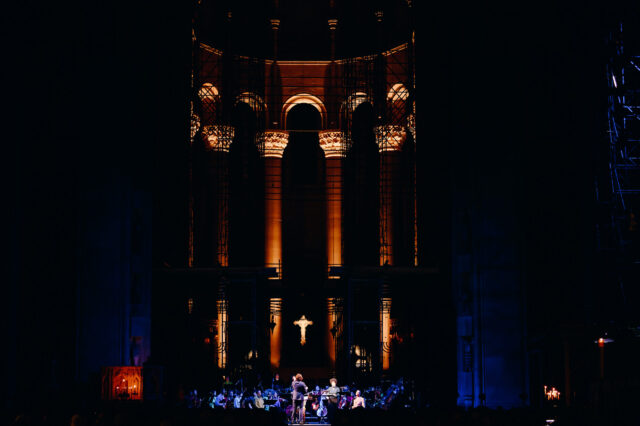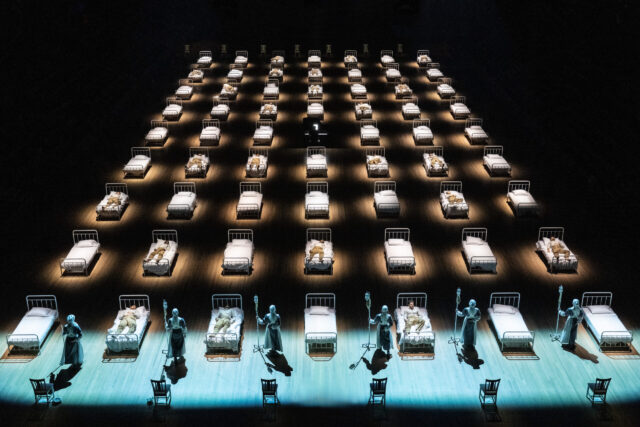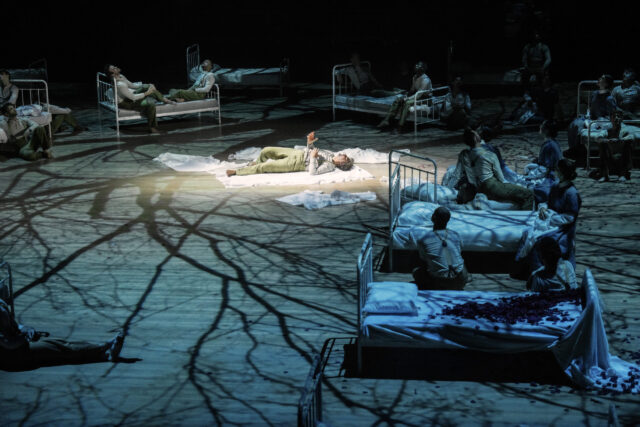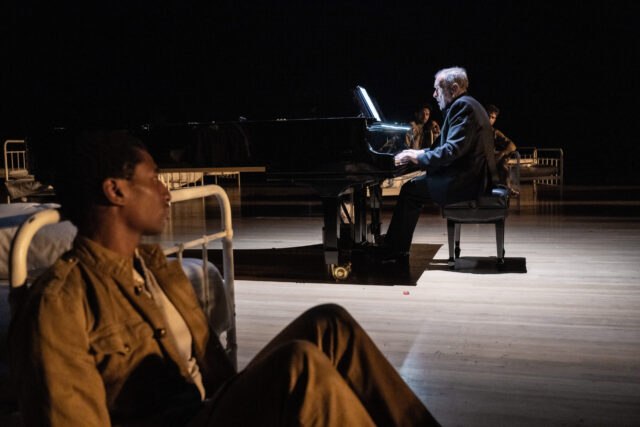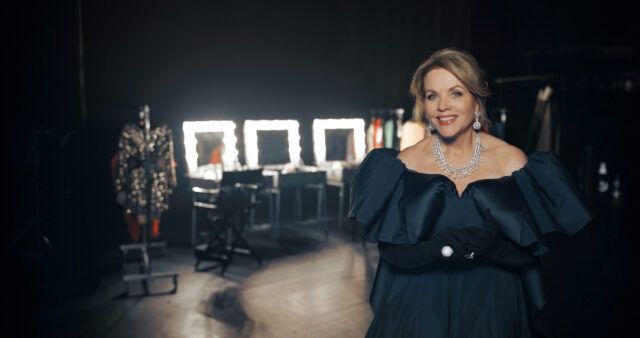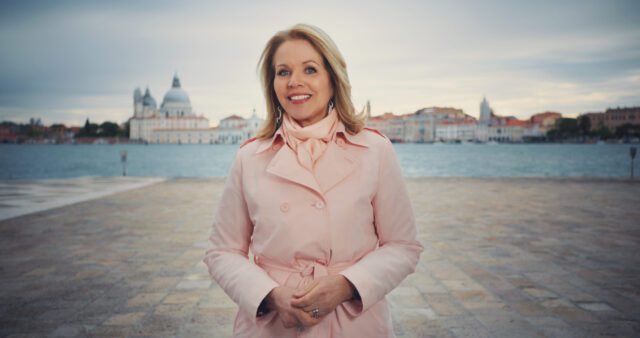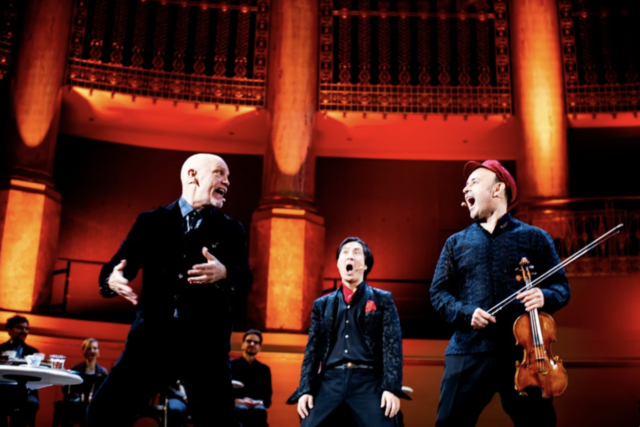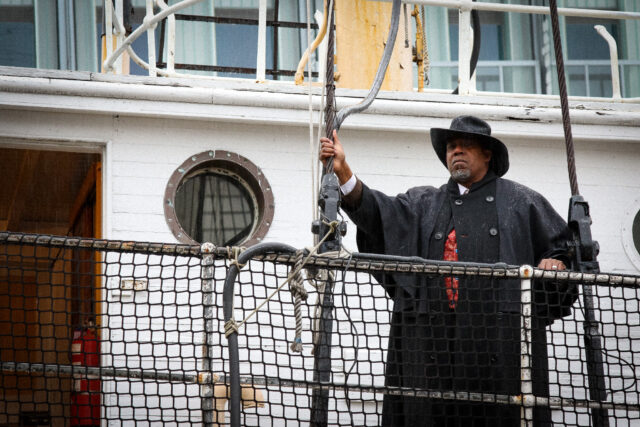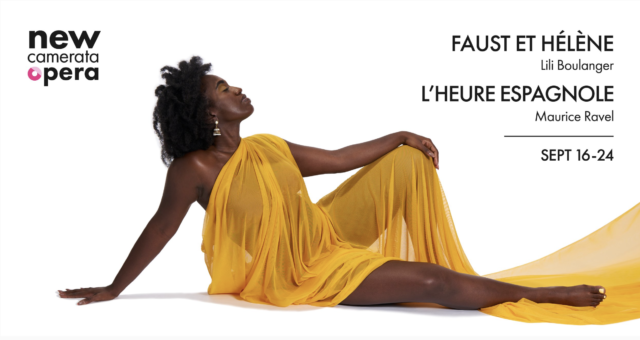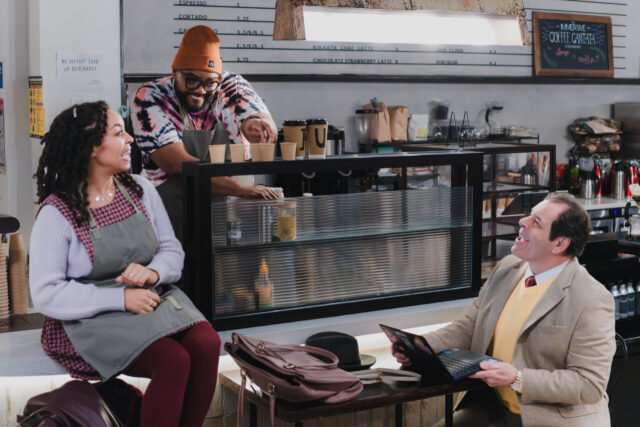
Christine Lyons, Bernard Holcomb, and Philip Cokorinos star in The Immersive Coffee Cantata (Dan Wright Photography)
THE IMMERSIVE COFFEE CANTATA EXPERIENCE
The Lost Draft
398 Broome St. between Lafayette & Mulberry Sts.
February 14-25, $40
osopera.org
thelostdraft.com
I have never been a coffee drinker. In fact, I have not had a sip of any type of java in more than forty years. But On Site Opera’s (OSO) latest site-specific production, The Immersive Coffee Cantata, is my kind of cuppa.
Coffee first made its way into Germany around 1670. In 1735, composer Johann Sebastian Bach and poet and librettist Christian Friedrich Henrici, known as Picander, teamed up for Coffee Cantata (Schweigt stille, plaudert nicht, BWV 211), a tasty tale of a father who insists his daughter give up coffee if she ever wants to get married.
OSO, which has staged shows at Wave Hill, at a barbecue market, in a soup kitchen, and on board ships at the South Street Seaport, this time moves into the Lost Draft coffee shop in SoHo, which, in its mission statement, explains, “Art is an expression that can never be perfected. It is indefinite, ever-evolving. Artists reveal the highest versions of themselves when they are lost in their work. There is no final draft. There is only the draft that best represents you as an artist. And what artist doesn’t love coffee? That is the inspiration behind the Lost Draft. A creative space for creative people who love coffee.”
The Lost Draft is a long, narrow shop with the counter on the left and small tables on the right. On each table are several empty coffee cups, two boxes of popcorn, and freshly baked cookies that you can start on while the four-piece band warms up. (If you’re lucky, you’ll get the scrumptious passion fruit red velvet delights along with the chocolate espresso cookie.) You can also take a coffee quiz by scanning the QR code on the card on your table.
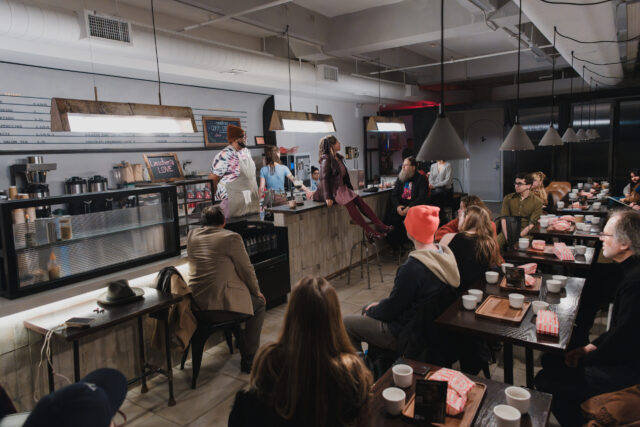
The Immersive Coffee Cantata takes place in the Lost Draft coffee shop in SoHo (Dan Wright Photography)
The show begins with Joe, the barista and narrator (tenor Bernard Holcomb), advising us, “If you’ll pipe down, and put your phones on mute, / You’ll overhear a family dispute: / Here comes Herr Schlendrian, / His daughter Lieschen close behind. / He’s about to lose his mind — / Or maybe it’s already gone.”
Schlendrian (bass-baritone Philip Cokorinos) enters, upset that his daughter, Lieschen (soprano Christine Lyons), is late and never listens to him. When she finally arrives, he yells at her, “You stubborn child, don’t drink that gritty mixture!,” but she declares, “My whole world floats in a cup or mug, / Revolving around Heaven’s true wonder drug / Thirsty for nectar from above. / Coffee, coffee: I’ve got to have it, / And it’s such a victimless habit. / Coffee is my liquid love!”
The sweet new libretto by Geoffrey McDonald, who also did the lovely orchestrations, quickly makes it clear that coffee is a stand-in for a man; fathers usually complain about a daughter’s choice in partners, but soon Schlendrian is checking the online matchmaking site Duetto to find Lieschen an acceptable future husband. Among the stickers on the back of Lieschen’s laptop is one of the iconic New York Greek coffee cup.
“Marital bliss: / Father, I want true love’s kiss! / Yes, a spouse! / Raise a family, buy a house!” she sings. “But I want a worthy suitor, / One who treats me like a queen. / I’ll agree to quit caffeine, / If you’ll serve as my recruiter!” And off they go, determined to make their dreams come true, demonstrated by a clever use of large and small paper coffee cups.
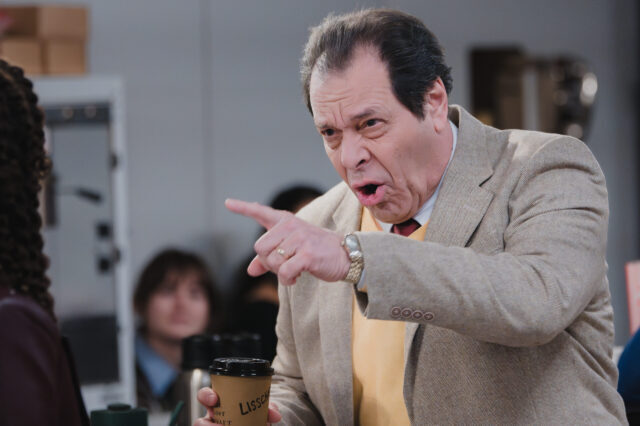
Schlendrian (Philip Cokorinos) is concerned for his daughter’s future in The Immersive Coffee Cantata (Dan Wright Photography)
During the forty-five-minute presentation, the actors and staff pour three tastings, Mama Mina, Kahawa Chungu, and the Queen’s Cup, the last also available in a go-cup. Meanwhile, the score is performed in a near corner by members of the American Modern Ensemble, featuring Valeriya Sholokova on cello, Nikita Yermack on violin, John Romeri on flute and recorder, and Dan Lippel on guitar, not all instruments Bach intended, but it works.
The Immersive Coffee Cantata is the first production under new OSO artistic director Sarah Meyers, who helms the show with an intimate, friendly touch. Cofounding general and artistic director Eric Einhorn, who stepped down at the end of last year, was chosen as one of Lieschen’s potential suitors in an earlier performance.
Met Opera veteran Cokorinos is terrific as the concerned father who wants only the best for his daughter, his face bold and expressive. Holcomb is welcoming as the amiable Joe, and Lyons is charming as Lieschen, who is forced into choosing between mocha and a man. Cokorinos’s diction is impeccable; you might have to refer to the online libretto for certain lines sung by Holcomb and Lyons, both of whom have exceptional voices.
My only quibble with the show is that it’s too short; I wanted to spend more time with the cast and crew, if not with the coffee itself.
[Mark Rifkin is a Brooklyn-born, Manhattan-based writer and editor; you can follow him on Substack here.]
